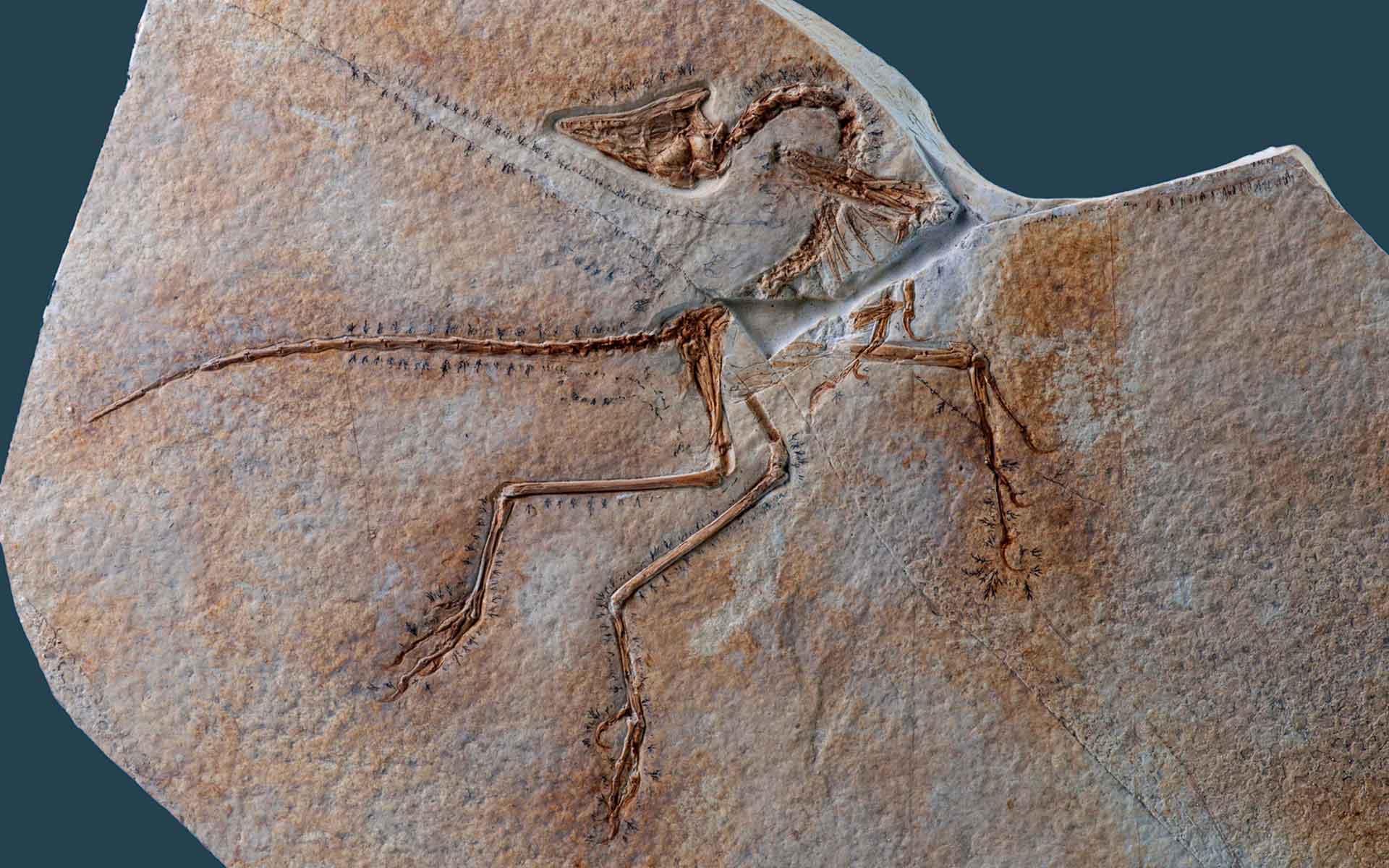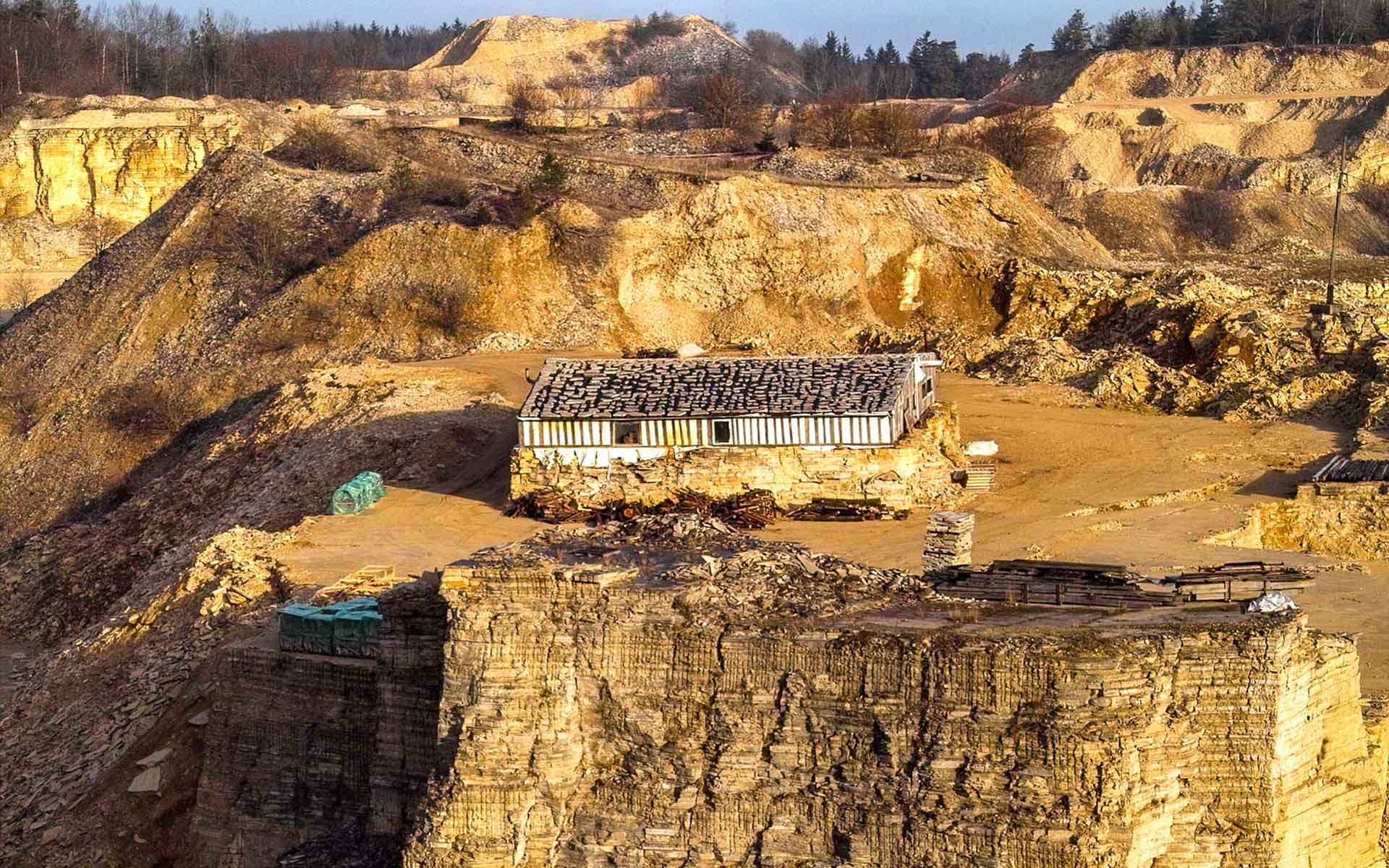
The “Eichstätt specimen” of Archaeopteryx, found in 1951. The original fossil is displayed in the “JuraMuseum” in the town of Eichstätt (LfU, Erwin Geiß).
Geological Period
Upper Jurassic
Main geological interest
Paleontology
History of geosciences
Location
Altmühltal Nature Park / Bavaria, Germany
48°53’25.0″N, 10°58’05.0″E
The “Eichstätt specimen” of Archaeopteryx, found in 1951. The original fossil is displayed in the “JuraMuseum” in the town of Eichstätt (LfU, Erwin Geiß).
A first-class paleontological site displaying high-quality reference material for scientists worldwide, including all known specimens of Archaeopteryx.
Due to the special sedimentation conditions fossils from Solnhofen-Eichstätt are exceptionally well preserved. So far, 12 specimens of Archaeopteryx are known, and all of them have been found in the area. Together with the numerous other species described scientifically, this fossil Lagerstätte is one of the world`s most significant windows to the past. In the region there are numerous quarries, some of them serving as official sites for visitors searching for fossils. Several thematic hiking pathes and several museums enable the serial geological heritage site to be experienced by local residents and visitors.
- Geological description
The area around the municipalities of Solnhofen and Eichstätt is the only occurrence of Tithonian platy limestones of the Altmühltal Formation worldwide. These rocks developed from material washed into lagoons of the “Solnhofen Archipelago” during occasional storms. As there was no life present at the bottom of these toxic hypersaline lagoons, the sediment remained undisturbed. Due to this, fossils of marine as well as land living animals and plants, which were deposited in the lagoons, are exceptionally well preserved. The early bird Archaeopteryx, found for the first time in 1861 (Meyer, 1862), is the most iconic of them. All of the known 12 specimens of Archaeopteryx originate from the Solnhofen-Eichstätt area. They are a matter of research up to now (e.g. Foth et al., 2014). Additionally there have been found a lot of other famous fossils like pterosaurs and small land-living carnivorous dinosaurs besides numerous other species (Arratia et al., 2015). The platy limestones have been quarried for hundreds of years as roofing material, decoration stone and for lithographical printing. Therefore the number of good outcrops is comparatively high, which leads to the finding of new fossils up to now.
- Scientific research and tradition
Early records of Solnhofen-Eichstätt fossils in the literature go back to the 16th century. Archaeopteryx fossils have been the matter of debate in the scientific dispute about the theory of evolution (e.g. Owen, 1863; Darwin, 1866; Huxley, 1868). Research on Solnhofen fossils is still in progress.
- Reference
Arratia, G. et al. (eds) (2015) Solnhofen – Ein Fenster in die Jurazeit Vol. 1+2 (2 vol). München: Pfeil-Verlag.
Darwin, C. (1866) On the origin of species by means of natural selection, or the preservation of favoured races in the struggle for life. 4th edition. London: John Murray. Available at: http://darwin-online.org.uk/content/frameset?itemID=F385&viewtype=text&pageseq=1
Foth, C., Tischlinger, H. and Rauhut, O.W.M. (2014) ‘New specimen of Archaeopteryx provides insights into the evolution of pennaceous feathers’, Nature, 511(7507), pp. 79–82. Available at: https://doi.org/10.1038/nature13467.
Huxley, T.H. (1868) ‘On the animals which are most nearly intermediate between birds and reptiles’, Annals and magazine of natural history, 2, pp. 66–75.
Meyer, H. von (1862) ‘Archaeopteryx lithographica aus dem lithographischen Schiefer von Solenhofen’, Palaeontographica, 10, pp. 53–56.
Owen, R. (1863) ‘On the Archeopteryx of Von Meyer, with a Description of the Fossil Remains of a Long-Tailed Species, from the Lithographic Stone of Solenhofen’, in. Royal Society of London (Philosophical transactions of the Royal Society, 153). Available at: http://archive.org/details/philtrans08457086
- Author(s)
Bavarian Environment Agency (LfU), Department Geological Survey, 95030 Hof, Germany


